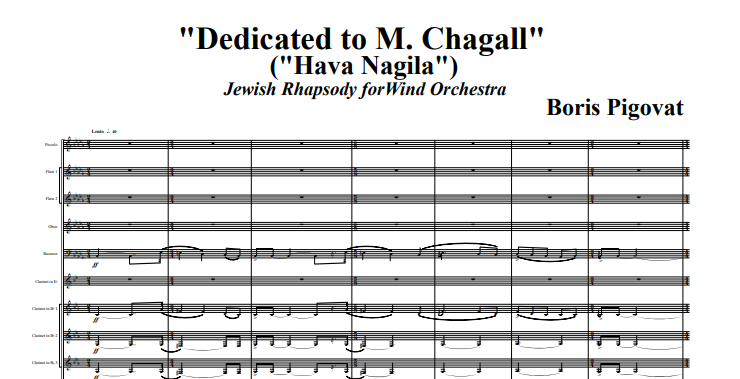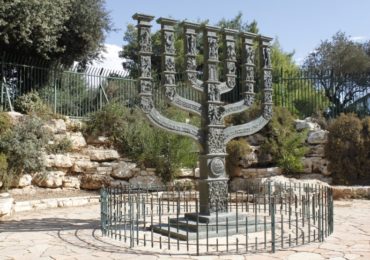

Related posts

Jerusalem
- Duration: ca. 17 minutes
- SO: Picc, 2 Fls, 2 Obs, 2 Cls, B.Cl, 2 Bsns, C.Bsn, 4 Hns, 3 Tpts, 3 Tbns, Tba, Timp, Perc, Hp, Cel, Str.
- SWB: Picc, 2 Fls, Ob, Bsn, 3 Cls, B.Cl, 2 A.Sxs, T.Sx, B.Sx, 4 Hns, 5 Tpts, 4 Tbns, Bar, 2 Tbas, Harp, Str.B, Synth, Timp, Perc
The inspiration behind this work is a city at the centre of three religions – Judaism, Christianity and Islam, City whose name means “peace”, and whose fate is war, City which has known pain and joy, destruction and renewal, sadness and hope, City whose past is submerged in blood. As for its future… Would anybody dare to say that he knows it?
The poem Jerusalem exists in three versions: for solo piano, for symphonic wind band, and for symphony orchestra.
I wrote the piano version in 1991, and revised it in 2002 and in 2009.
Below is a recording of the 2002 version, performed by Michael Zelevinsky in Jerusalem.
The final piano version premiered in 2014 in Paris, at the first COMPETITION-FESTIVAL – modern piano repertoire, performed by Olivier Seuzaret.
Jerusalem for Piano was published in 2015 by Le CHANT du MONDE, Editions Musicales (in France).
In 2017, this work was performed several times by Albanian pianist Almira Emiri. Below is a recording from YouTube.
In 2012, I wrote the symphonic wind band version.
It was premiered in 2013 by the Petach-Tikva Conservatoire Wind Orchestra, conducted by Michael Delman.
Below is an audio recording of that performance. Although both the orchestra and the recording are not professional, the performance was very enthusiastic and presents a favorable rendition the work.
I wrote the initial version for symphony orchestra in 1993, shortly after I wrote the piano version. However, I was not satisfied with the result; I’ve added a lot of additional content to orchestral version, and the combination resulted in a musical structure that lacked cohesion.
After I wrote Holocaust Requiem in 1994-1995, my attitude towards orchestration changed. As result,I put aside Jerusalem until autumn 2017, when I prepared a new version.
Below are recordings of the piano solo version and of the symphonic wind band version.
Piano Solo version
Symphonic Wind Band version

Nigun (1996)
For String Orchestra / String Quartet / Solo Viola / Solo Violin / Solo Violoncello
- Duration: ca. 5 minutes
The first version of Nigun was written in 1996, for string orchestra.
In this piece, I give expression to the tragic spirit that I feel in traditional Jewish music. However, there are no themes from traditional melodies in the piece. Rather, , the composition expresses the style and spiritual atmosphere of the ancient tunes.
The piece was premiered in Israel in 1997 by the Jerusalem Camerata, conducted by Horia Andreescu. Later it was performed by various orchestras in Israel and around the world.
In 1997, I prepared the version for solo violin. Unfortunately, this version has not yet been performed.
In 2008, I prepared the version for solo viola for the American violist Scott Slapin; he recorded it a few months later.
In 2010, I prepared the string quartet version for the Requiem CD (Atoll Records). This version is very similar to the 1996 version. However, I eliminated the contrabass part, and the opening unison of violas, violins and cellos I replaced with a violin solo. The piece was recorded by the Dominion String Quartet.
In 2017, I prepared the solo cello version for Israeli cellist Inbal Megiddo, who premiered it that autumn.
Below you can find recordings of various versions of Nigun.
Version for String Orchestra
Version for SOLO Viola
Samples from the "Requiem CD"
Dominion String Quartet
Donald Maurice, Viola
Yuri Gezentsvey, Violin
Rosemary Harris, Violin
David Chickering, Cello
2010